- Gather all wool to be washed.
- Fill sink with warm water.
- Add a capful (or 1/2 teaspoon) of Naturally Luxe wool wash.
- Place wool in water and squeeze gently to allow water to flow through the garment.
- Let sit in wool bath for approximately 5-10 minutes. No longer. Sitting in dirty water is not going to get your garment cleaner.
- Add a cup of white vinegar to wool bath if you notice the water color changing (usually red...)
- No rinse needed.
- Gently squeeze water out, do not wring or twist.
- Lay flat to dry (or hang over your shower curtain rod if you lack space to dry flat).
I've read that washing wool, or being afraid to wash wool is one of the many reasons other cloth diapering parents shy away from using wool.To prove my point that wool is easy to care for...if not easier then "regular" clothes...here's how a wool wash goes at our house.
I gather all wool to be washed and fill my kichen sink with warm water. Water temp does not matter as much as you'd think. Agitation is what you should make sure to be aware of.
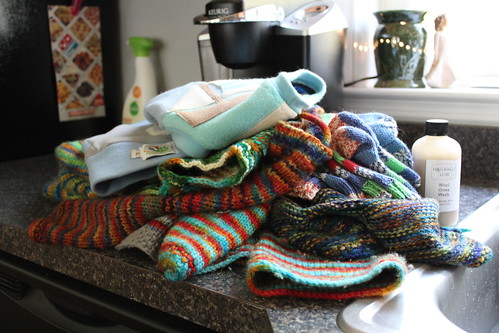
For wool wash I prefer organic wool wash from Naturally Luxe. Today I used a scented wool wash but we usually use unscented. Everything I sell is washed in unscented wool wash unless otherwise noted in the listing.
I have several pieces of wool to wash at one time, but I wash them in small batches according to color. I usually know what wools are going to bleed by looking at them but to be sure red longies only bleed on other red longies and not onto our Wild Child Woolie soakers I wash them sparately.
I had socks my mother knit for Ben and Garrett to wash and since they were new/unused/not-actually-dirty, they got washed first.
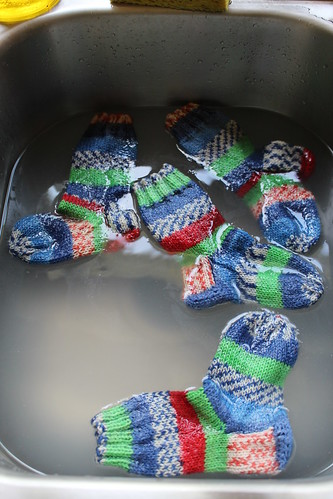
Next in the wool bath was our pale colored Wild Child Woolie soakers. Interlock wool gets dingy looking and I've found that rubbing the dingy parts together lightly gets them a bit cleaner looking. These are really easy to wash as a little agitation isn't going to do anything to this nice thick interlock. A trip through the washer and then dryer...shrinks them a full size, just ask my husband.

Next up are our "without red" knit pieces. I squeeze them all gently to get water to flow through the fibers. Avoid rubbing the items against each other. 100% wool rubbing against 100% wool causes felting. Agitation is what make the fibers open up and "stick" to each other. Which causes the garment to loose stretch and thicken, which in turn causes shrinkage (otherwise known as felting).
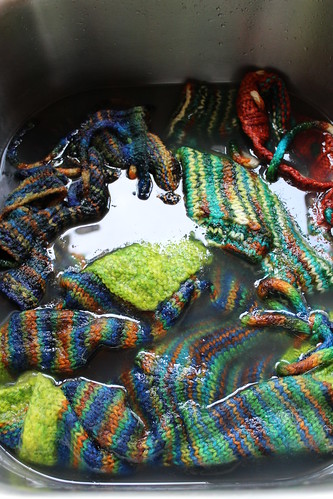
And lastly, the red batch. One pair of these has been known to bleed so I had my white vinegar on standby incase the water turned red...but it didn't. Adding a cup to the wash bath sets whatever wool is bleeding (at least until the next wash). We've been using AIO's and disposables so these woolies haven't seen too much pee. My educated guess is that is why they didn't bleed.
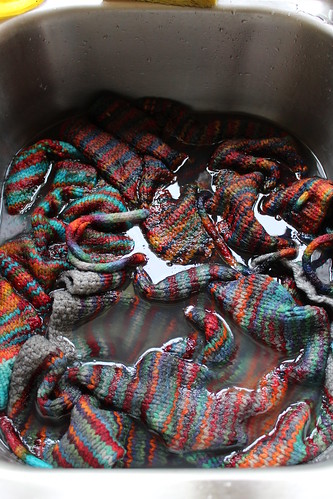
A clean pie of wool. In less time then it takes to just wash a load of clothes. :)
Our woolies for the week are done. Just in need of some drying time.
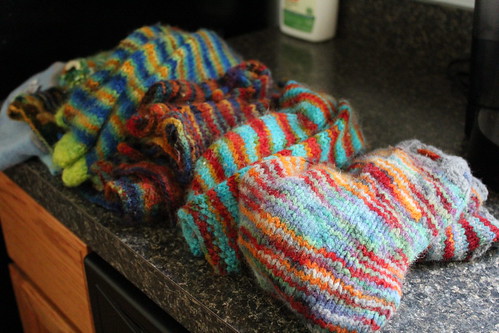
In a perfect world I'd have enough cooling racks to lay them on...but I don't. So the socks got the cookie treatment and the woolies were hung over the shower curtain rods to dry.
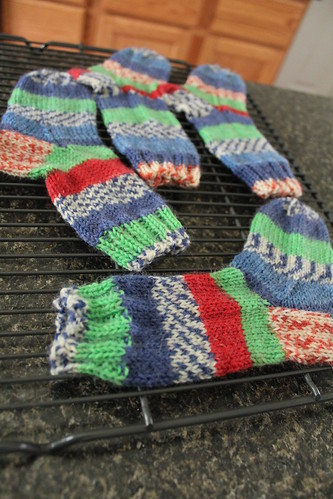

1 comment:
I love-love-love to do a good wooly-stash cleansing day and just wash the whole thing. Something about the smell of Monkey Farts and wet sheep filling the house as woolies hang to dry for a day or two.... Yeah, that sounds bizarre- I guess I really am a woolie addict. :-D
Post a Comment